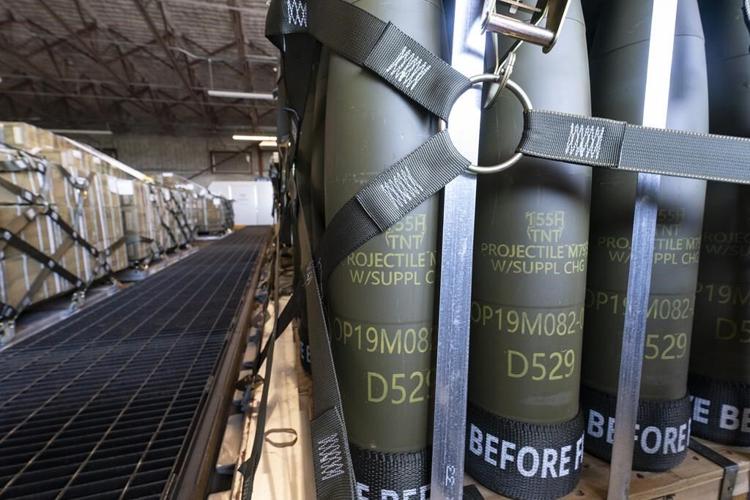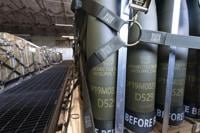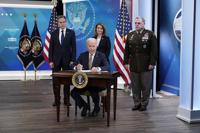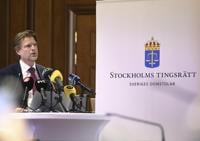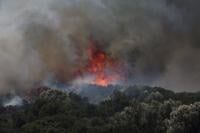WASHINGTON (AP) — As the war rages on in Ukraine, the United States is doing more than supporting an ally. It's learning lessons — with an eye toward a possible future clash with China.
No one knows what the next U.S. major military conflict will be or whether the U.S. will send troops — as it did in Afghanistan and Iraq — or provide vast amounts of aid and expertise, as it has done with Ukraine.
But China remains . U.S. military officials say Beijing wants to be the by 2027, and the U.S. is the island democracy's chief ally and supplier of defense weapons.
While there are key differences in geography and in the U.S. commitment to come to Taiwan’s defense, “there are between the Russian invasion of Ukraine and a possible Chinese attack on Taiwan,” a found last month.
A look at some of the lessons from the Ukraine war and how they could apply to a Taiwan conflict:
ARM IN ADVANCE
Soon after , the U.S. and allies began sending massive amounts of weapons across the border from partner nations.
But Taiwan would need to be fully armed in advance, CSIS found in dozens of war scenarios it ran for its report.
"The ‘Ukraine model’ cannot be replicated in Taiwan because China can isolate the island for weeks or even months," the bipartisan, nonprofit policy research organization and think tank found. "Taiwan must start the war with everything it needs."
Deputy Defense Secretary Kathleen Hicks said Ukraine “was more of a cold-start approach than the planned approach we have been working on for Taiwan, and we will apply those lessons.”
For China, Hicks told The Associated Press that an amphibious landing is the hardest military operation to undertake. But that same challenge would also make resupply difficult, particularly if China chokes off ocean access.
___
STOCKPILE WOES
The Pentagon cannot pre-position equipment Ukraine is putting intense pressure on the and exposing that neither was ready for a major conventional conflict.
For some items “we have weaknesses in both our inventory and our production capacity,” said CSIS International Security Program senior adviser Mark Cancian, an author of the Taiwan report. “In a couple of places, particularly artillery ammunition, it could become a crisis."
Ukraine is shooting as many as 7,000 rounds a day to defend itself and has depended on announcements about every two weeks of new ammunition shipments from the U.S.
Since Russia invaded, the U.S. has sent Ukraine millions of rounds of munitions, including small arms and artillery rounds, 8,500 Javelin anti-armor systems, 1,600 Stinger anti-aircraft systems and 100,000 rounds of 125 mm tank ammunition.
One of the biggest stockpile pressure points has been 155 mm howitzer ammunition. The U.S. has sent Ukraine 160 howitzers and more than 1 million howitzer rounds, which have been put to heavy use with as many as 3,000 rounds fired a day, according to the Pentagon.
Ukraine is waging a different type of war than the U.S. would likely face with China, said Doug Bush, assistant Army secretary for acquisition. A future U.S. campaign would likely involve much more air power and sea power, taking some of the pressure off land-based systems and ammunition.
But allies would still need to be supported with land-based systems and ammunition.
___
REBUILDING TAKES TIME
The Pentagon’s defense strategy says the U.S. must be able to conduct one war while deterring another, but the supply chain
Hicks said the surge of weapons to Ukraine “has not slowed down U.S. support to Taiwan,” but many of the military sales promised to Taiwan are facing the same pressures the Ukraine munitions face, such as limited parts or workforce issues.
In response, the U.S. has set up a presidential drawdown authority for Taiwan, Hicks said, that will allow the U.S. to send weapons from its own stockpiles instead of arranging new contracts.
The Army is working with Congress to get the authority to do multiyear contracts, so that companies will invest to meet longer-term needs, especially for the systems Bush called “the big four” — , High Mobility Artillery Rocket System ( ) launchers, Guided Multiple Launch Rocket System (GMLRS) munitions and 155 mm rounds.
“Without that urgency, we risk being behind at the wrong time later,” Bush said.
The Army is adding production lines for 155 mm artillery — including major components such as the outer metal shell, chargers, the fuse and the explosive material — while right now all production is at one facility in Iowa.
All of that will take time. CSIS reported it could take five years or more to replenish 155 mm, Javelin and Stinger stockpiles.
“The good news is that I think the Ukraine conflict has alerted people to these weaknesses. The bad news is that they’re going to take a long, long time to solve even if there is a lot of political will,” said Hal Brands, a senior fellow at the American Enterprise Institute.
For European stockpiles, and many of the partner nations are rushing to sign new contracts with industry to replenish inventories. warned this week in Brussels that particularly for larger caliber munitions, such as for ground artillery, it could be as long as 2 1/2 years before some new orders are delivered.
___
SPACE AS A FRONT LINE
With its use of tanks and artillery, the Ukraine war often seems like a throwback to 20th century ground wars, but it has provided lessons in how valuable space technology has become for intelligence, communications and propaganda.
Before the war, satellite imagery showed Russian forces massing along the border, countering Russia's claims that it was just staging a military exercise. As troops crossed the border, Ukrainian civilians fed real-time images and video from their smart phones to expose Russian military positions, record confessions from captured Russian forces and publicize Russian troop defeats and deaths.
When Ukraine’s cell towers and power were struck, SpaceX CEO Elon Musk provided a backup by sending hundreds of his Starlink terminals to Kyiv to keep Ukraine connected.
“Russia just got its clock cleaned in the information war from Day One, and they were never able to control the narrative coming out of Ukraine” of democracy under attack, Brands said. “We should assume that China won’t make the same mistake, that it will try very aggressively to control the information space.”
U.S. space experts are also looking at expanding satellite communications, building on Starlink’s successes. While Starlink is now the main orbiting commercial communications ring, others are coming online.
Starlink has thousands of satellites orbiting the Earth at the same low altitude in a ring. In a potential conflict, if one satellite was attacked, it would be quickly backfilled by another orbiting into place behind it.
That type of proliferated satellite communications is “the way of the future,” John Plumb, assistant secretary of defense for space policy, told the AP. “This is the thing we need to adapt to.”
___
BE READY FOR CYBERWAR
While the satellites and their transmissions must be protected, the ground stations to process and disseminate information are also vulnerable. As Russia invaded, a software attack against Ukraine's Viasat satellite communications network While Viasat has not said who was to blame, Ukraine blamed Russian hackers.
China would likely use cyberwarfare to prevent Taiwan from sending out similar messages showing that it was effectively resisting any assault, Brands said.
That issue has the attention of the U.S. Space Force.
“If we’re not thinking about cyber protection of our ground networks," the networks will be left vulnerable, and the satellites won’t be able to distribute their information, said the chief of space operations, Gen. Chance Saltzman.

